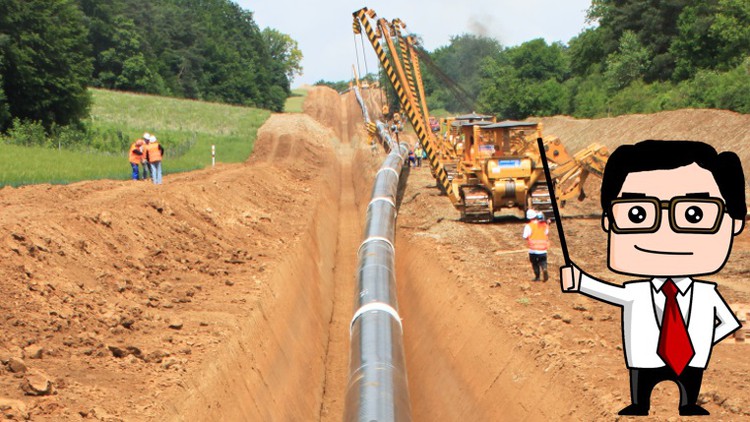
Learn design of different supporting systems of buried pipes [Restrained length, Thrust blocks & Line anchors]
What you will learn
Understanding of forces on underground pipeline
Types of supporting systems for underground pipeline
Design of pipeline restrained length
Design of pipeline thrust blocks
Design of pipelines line anchors
Description
This course has been prepared for civil/structural engineers into water field or any field where you have to deal with underground pipe system.
This course consists of 5 main sections
First Section
In the first section, you will learn about the different types of buried pipeline systems and you will learn about the forces acting on underground pipe system and affecting their stability at bends or different fittings.
Then we will start explaining the different types of supporting systems to used to stabilize the buried pipeline which are
- – Thrust blocks
- – Line anchors
- – Restrained length
First section will end by discussing the difference between each system, the advantages and disadvantages and when to be used.
Second Section
Then, in the second section of the course, we will start explaining – in details – the forces affecting thrust blocks such as
- – Thrust force
- – Active earth pressure
- – Passive earth pressure
- – Surcharge pressure
Also we will learn about the different stability checks to be carried out as well as the different cases of operation
Third Section
In the third section, the same curriculum of the second section will be repeated but for the line anchors system
Fourth Section
In the fourth section, we will start solving a full example on calculating the size of thrust block on a 90 degree bend on DN800mm
Fifth Section
In the fifth section, we will repeat the same example of the fourth section. However, instead of calculating the required size of the thrust block, we will calculate the required size & No. of line anchors.
By the end of this course and as an additional resources, we have provided multiple excel spreadsheets for the stability calculations of thrust blocks & line anchors as well as restrained length calculations.
Content